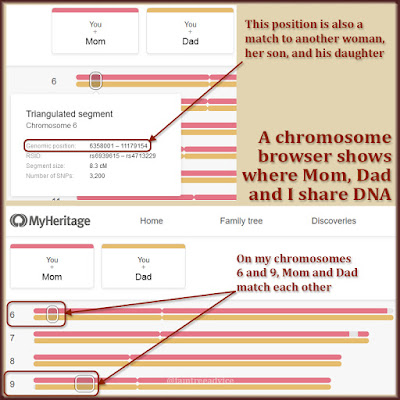My sons know I'm something of a computer guru. I've been working at a computer their whole lives.
But do they know my mother saved my life in a car crash when I was 10? Do they know why I went to 3 colleges for a total of 5 years? Have I told them I starred in several student films in college?
I've written before about an easy way to write your ancestors' life stories. It's based on family lore and all the documents and photos you've collected. But what about your own stories? What about those important memories that exist only in your head?
This project will be a living document. Old memories crop up when we least expect them. If you have a place to capture them, you can add to your life story at any time.
You may want to use a blank book for your living life story. Or you can use a loose leaf binder so you can arrange your memories in chronological order. Me? I prefer an electronic document, like a Word file. Nothing beats cut-and-paste for putting things where they should be.
Once you've chosen where to capture your memories, here's how to get started.
 |
| In 4 steps you can return to at any time, you can write your life story for future genealogists. |
Step 1: Create a Timeline
Enter some basic facts, such as:
- When and where you were born
- All the schools you attended, plus where and when
- All the places you worked, where and when
- All the places you lived, with addresses and years
- Key life events like marriages and births
The schools, jobs, and homes are a long list for me! Like, crazy long. But they play a big part in my life story.
Step 2: Add Highlights
Think about each of your schools, jobs, and homes one at a time. Take the time to dwell on each one until some memories come bubbling up to the surface.
Write down an experience that crystallizes that time and place for you. I have an unusual anecdote about my childhood home. It's a recurring dream I had about the house itself. I've already told my sons about this weird dinosaur dream. So much so, that one of my sons has had it, too! It seems I've already passed that down.
I'd like to capture the dream, but I won't leave out the real memories of that house, like:
- Playing "Beatles" when my cousin would visit and we were a group of 4. We'd run around the backyard, pretending a mob of girls was chasing us.
- All the family and neighborhood parties we had in the basement that my dad turned into a bar and poolroom. I was a child bartender. That's fun.
- My chemistry set! The memory of it is so important to me. Because it might make a mess, Mom made me set it up in the darkest, scariest corner of our basement, behind the bar. It took courage to go play with it.
I'll bet you can pull up memories about every place you've lived, worked, and gone to school.
Take advantage of the mood when it strikes you. Jot down these basic memories with enough detail for you to remember the whole story and fill it in later. For instance, I can come up with a short list of memories for my homes in:
- California: I don't remember being a baby in Buena Park, but I did visit the house a few years ago
- Long Island: our playhouse in the backyard, and seeing the Beatles on the Ed Sullivan show
- Rockland County: summers by the pool and countless drive-in movies
- Connecticut: moving ourselves into that house, and the great bee infestation
- Indiana: driving 60 miles to college twice a week, and seeing every major film of 1982
- New Jersey: buying my first car, getting my first apartment
- Pennsylvania: the days my kids were born, and buying 4 houses
- New York again: building our house on a mountaintop with an awesome view
And I can do the same for each of my many schools and jobs.
Step 3: Bring the Memories to Life
Go back to your list of memories and relive one. Flesh it out for future readers. Write it as if you were watching it in a movie, but don't fuss over the style. Tell why it's important to you. Why do you still remember it? Does that memory lead you to another? Write that down, too.
Of course, there are some memories we don't want to share with our kids, or anyone else. Those will have to stay in our heads. But we can still have our "feels" while reliving them.
Return to your living document whenever an important memory comes back to you in a dream or in a train of thought. It should be therapeutic, and a bit eye-opening. Re-read what you've got to see if more details spring to mind.
Step 4: Mention Your Project
This is the easiest step, but it's crucial. Once you've gotten started, let some family members know about it. You don't have to share it yet, but make them aware it exists, and where it is.
Your family history research tends to focus on your ancestors, right? I know I spend most of my time thinking about my relatives from the 1800s. I wish I had even one anecdote from their lives.
This is your chance to blow the minds of your future relatives when they discover you.






